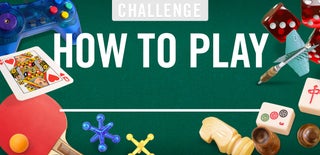Introduction: Preposition UNO - Games for English Teachers (ESL)
This is a game I was inspired to make from a rough drawing I found in my desk left from a previous teacher of a similar activity. This game follows the same rules as UNO except students cannot play more than one card at one time.
If this activity was useful to you, please vote for it!
Step 1: Create the Cards
Glue the cards onto coloured paper and cut them out. Put them into card-sized laminating sheets and laminate the cards. If you don’t have card-sized sheets, print a pattern onto the back of the cards instead and use A4 laminating sheets to laminate the cards and cut them out. Note that if you glue coloured paper onto the backs of cards, laminate them, and then cut them out that the cards will come apart. If you don't have access to a laminator, you can print them onto sturdy card stock instead.
If you wish to challenge your students, remove the words on the cards so that they have to make their own sentences completely, or print two versions of the game so they can try both.
Attachments
Step 2: Directions for Play
Attached is a PDF with instructions and corresponding images that can be given to the students.
- Make groups of 3 or 4 players.
- Give 8 cards to each player.
- Put the rest of the cards face down in the middle of the table.
- Play goes clockwise.
- Decide who goes first (rock, paper, scissors works).
- Flip over the top card and put it face up in the middle of the table.
- The first player will play one card that matches the animal or the position. The student will make a sentence with the words on the card. For example, “The penguin is in front of the post office.”
- The next player will play a card that will match one of the words on the previous card. For example, “The penguin is on the ball,” or “The cat is in front of the TV.”
- You can play “Wild” cards on any card. You can choose the animal for the next player to play.
- “Reverse” cards must match the animal played before. “Reverse” means that the order of players changes (goes backwards).
- “Skip” cards must match the animal played before. “Skip” means that the next player misses a turn.
- If a student cannot play, the student will take one card from the pile. If the new card can be played, he/she can play it in this turn.
- The student who gets rid of all of his/her cards first is the winner!
Attachments
Step 3: Teaching Prepositions
To teach prepositions, I use cut-outs of buildings, objects, and people. I like to use buildings that have big windows to see if people are in them. I have created custom buildings, such as the school I teach at. You can also use photos of teachers or famous characters to make the lesson more interesting and show how the sentence changes using names instead of general nouns. For example, “Melissa is in front of the school” versus “The girl is in front of the school.” I have created a zombie to make the lesson more dynamic and interesting by adding a little black humour. I change the positions of the objects and characters. For example, I put the zombie on top of the girl, and ask “Where is the girl?” I then ask “If the zombie eats the girl, where is the girl?”
You can easily use a PowerPoint to achieve this effect with simple shapes and clipart, make your own buildings with paper and magnets (using construction paper or creating buildings using shapes in Word or PowerPoint).
You can switch from the board to real life examples before and/or after
the game is played. For example, “Where is (student’s name)?” “Where do you live?” “Where is your textbook?”
Pictured above is my own class learning prepositions and how to play the game, as well as example materials I use to teach.

Participated in the
How to Play ____












